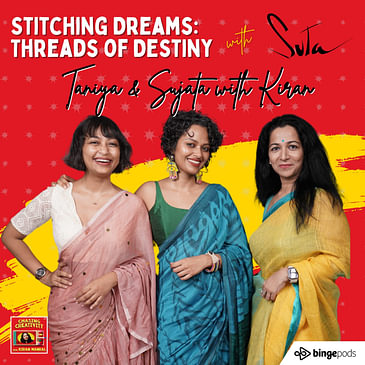In this episode of Chasing Creativity, we sit down with Tanya and Sujata Biswas, the inspiring sister duo behind the innovative sari brand, Suta.
Discover their journey from small-town engineers to fashion trailblazers who have redefined the traditional sari. Learn about their creative process, childhood inspirations, and the thoughtful approach they bring to designing accessible and stylish saris.
Get insights into their initial struggles, the philosophy behind their designs, and how they have successfully brought the sari back into everyday wear.
Join us as we delve into their mission to revive traditional crafts and make the sari a global fashion staple.
00:00 Introduction to Suta and the Founders
01:00 Childhood Memories and Inspirations
03:15 Revolutionizing the Sari
05:52 Challenges and Breakthroughs
12:16 Design Philosophy and Team Building
23:31 Personal Touch and Social Media
26:26 Creative Photoshoots and Family Involvement
27:42 The Emotional Connection to Clothing
28:17 Shooting Challenges and Creative Solutions
30:20 Interior Design of Unique Stores
30:49 Raksha's Inspiring Journey
33:09 Creative Process and Methodical Planning
35:08 Innovative Experiments and Sustainability
37:55 The Birth of Suta
40:05 Future Innovations and Travel Influences
44:21 Vision for Suta's Future
47:16 Rapid Fire and Closing Thoughts


